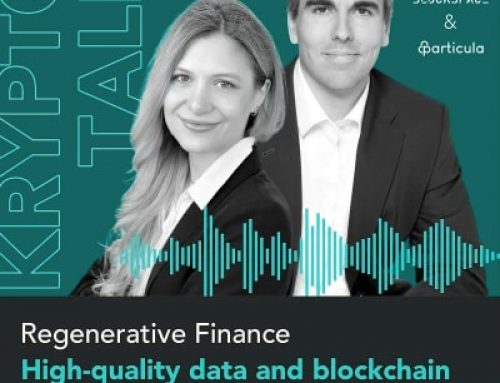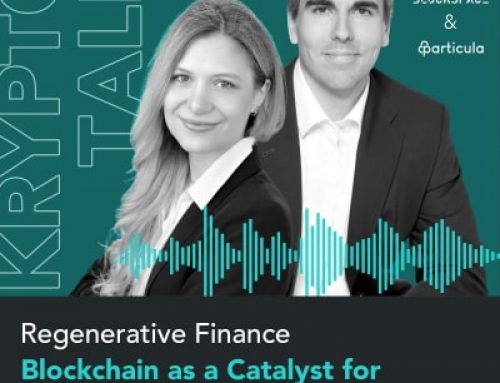
Scenario 3 — Blockchain-based Registry operated by a Traditional Registry (e.g. Verra or Goldstandard)
Abstract
A growing number of companies and individuals are becoming aware of the climate crisis and the urgency that is required to address the looming problems. Corporations and consumers alike can offset the emissions they cannot reduce on the Voluntary Carbon Market (VCM) by buying credits, each representing a one metric-ton reduction in emissions. But the VCM for the most part is not yet digitized, which makes processes slow and inefficient. Blockchain technology could prove to be one of the most promising tools for social and environmental change, but no dominant design has emerged yet for the tokenization of carbon credits. In this multi-part series we take a look at the possibility, requirements and consequences of a larger traditional registry like Verra or Gold Standard developing their own blockchain-based registry.
Recap: One-Way-Bridges
To answer the question why one of the main central registries would possibly develop their own blockchain-based system, it is necessary to understand the deficiencies of the alternative solutions.
The idea of converting existing registry-based carbon credits into carbon tokens via a one-way bridge, was introduced by the Toucan Protocol. It allows anybody to tokenize their carbon offsets and make them available to the world of decentralized finance (DeFi).
To count a credit toward its own carbon footprint, a company must remove it from circulation so nobody else can claim the benefit. When credits get bridged via the Toucan Protocol, the registry-based carbon credit is immediately retired and the owner gets a receipt of the retirement which can then be used as backing for new tokenized carbon credits. Essentially the credits do not get transferred from one registry to another, but are retired in the traditional registry and minted on the blockchain-based registry.
Therefore in May 2022 the big standard-setters banned this activity and announced that credits can only be retired by the company or person claiming the climate benefit. The process of tokenization via a one-way bridge is shown in figure 1.

Recap: Two-Way-Bridges
To circumvent the shortcomings of one-way bridges, it didn’t take long for the first token issuer to develop a two-way bridge. Instead of retiring credits in the traditional registry, they get a new status as being “transferred” to the blockchain registry. Each change in the ownership as well as the retirement are reported back to the central registry. Essentially the centralized registry and the blockchain registry are kept in sync at all times. This way the most obvious inadequacy of a one-way token bridge can be eliminated. The tokenization process of a two-way bridge is shown in figure 2.
A
Is a Blockchain-based Central Registry the best Solution for the Carbon Market?
It appears fair to assume that two-way carbon bridges are seen superior over one-way carbon bridges. After all, Verra and Gold Standard aren’t per se opposed to carbon credits to be turned into carbon tokens, but insist on a new process instead of credits being retired. Therefore two-way carbon bridges appear to be a favorable solution for central registries — at least in the short-term.
But looking at the process and two different types of registries (on-chain and off-chain) being kept in sync begs the question if it wasn’t the most desirable approach to have one blockchain-based central registry as shown in figure 3? Of course the answer depends on the point of view. If the two most relevant central registries were to issue carbon credits on their own blockchain-based registry, the standard would effectively be set.
Consequences for the Decentralized Blockchain Registries and Marketplaces
Would that mean that the decentralized blockchain-based registries and marketplaces that are currently being developed would become entirely obsolete? Not quite, but their focus and utilization would have to change. In this scenario Verra and Gold Standard (GS) would be responsible for the issuance (tokenization) and retirement (burning) of carbon credits, while exchanges for the secondary market are still needed. A blockchain-based central registry will also be better suited for connecting different registry systems, and thus allow multiple heterogeneous carbon markets to be linked.
Another consequence for the existing blockchain-based registries and marketplaces is that currently all account holders in the centralized registries are subject to know-your-client (KYC) checks as well as anti-money laundering requirements (AML) and likely KYC and AML features will need to be adopted by anybody operating in the VCM. Such KYC checks are also important in the carbon market context to know who claims the environmental benefit towards their environmental target.
Furthermore it is to be expected that the environmental integrity of the entire system will have to be ensured at all times with regards to prohibiting any form of double-issuance and double-use and complying with regulatory and legal certainty.

It is worth noting that this series focuses on the tokenization process and the different approaches that can be taken to get carbon credits on-chain. Besides the digitization of the registries and carbon certificates, the digitization of Monitoring, Reporting and Verification (MRV) systems will also make carbon markets more efficient. MRV is a multi-step process to measure the emission reductions achieved by a specific mitigation activity, report the findings to an accredited third party, and verify the reductions so they can be certified, and carbon credits can be issued. Currently, also the MRV process is often costly, time-consuming, and susceptible to error, as it relies on manual information recording or in-person surveys. But increasingly, digital technologies are being used to streamline data collection, processing, and quality control in MRV processes.
Conclusion
One-way carbon bridges have inherent characteristics that will no longer be tolerated by the big traditional central registries. Two-way bridges with added KYC and AML features are likely solutions for the short- to mid-term. They ensure that central registries are kept up to date at all time and that carbon credits indeed are only retired when they are claimed as offsets by a corporation or individual. A logical consequence of the digitization efforts of the registries could lead to them developing their own central blockchain system. In that case the on-chain registries and marketplaces that are currently built, might have to adjust and focus on exchange features for the secondary market and link carbon markets across multiple registries and multiple chains.




